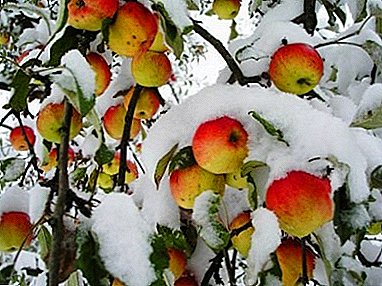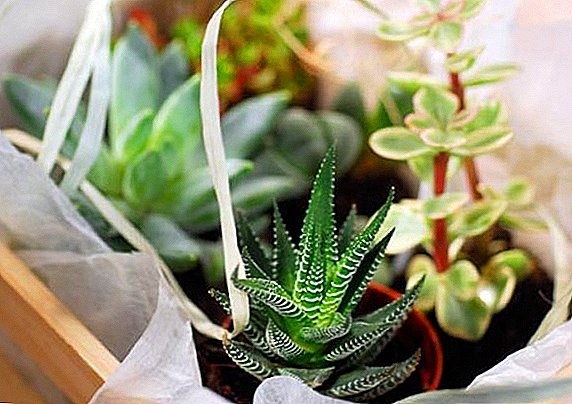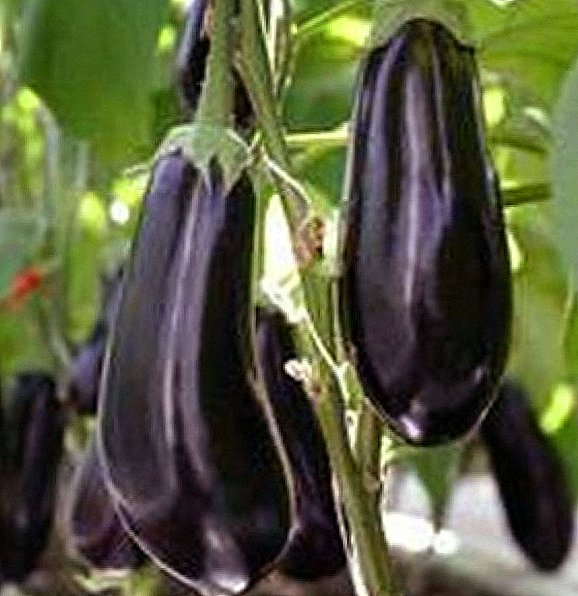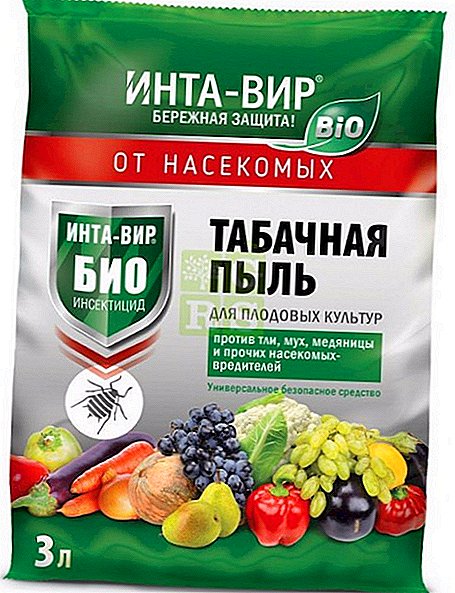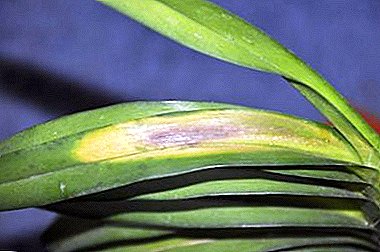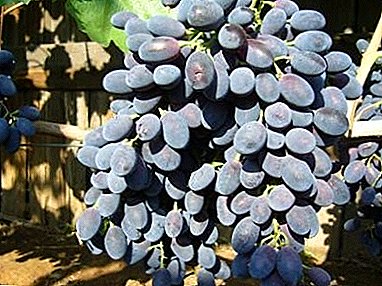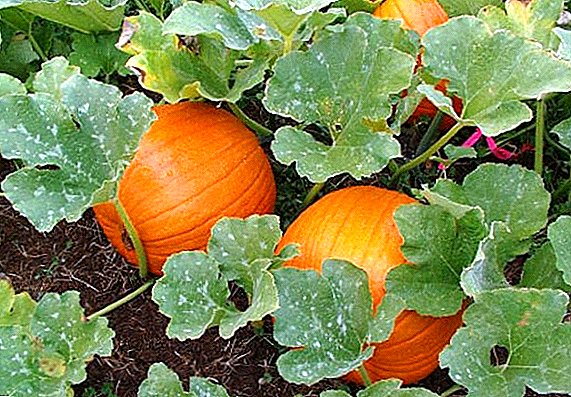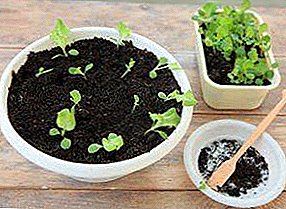
Growing pepper from seeds is not an easy task for a novice gardener. One of the difficult moments - picking young sprouts, necessary for the successful development of plants.
Picks are subject to strong and promising shoots, weak and frail subject to culling. The further development of the seedlings depends on the accuracy of the operation; therefore, it should be carried out very carefully, precisely observing the dates and increasing the care of the plants.
Why do we need a picking?
A pick is the transfer of grown seedlings from a common container to individual pots.
Some gardeners believe that picking up sweet pepper seedlings slows down the development of seedlings. The root system of sweet peppers is very fragile, the plants are painfully experiencing any damage.
However, proponents of the picking are confident that the procedure promotes hardening and strengthening of plants, and a slight delay in growth is only useful, it does not allow seedlings to prematurely stretch. Under the terms of planting seeds no problems with the development of seedlings occur.
 Earlier picking of sweet pepper, which is carried out at the stage of cotyledon leaves, will help to reduce the trauma.
Earlier picking of sweet pepper, which is carried out at the stage of cotyledon leaves, will help to reduce the trauma.
This method is used in industrial greenhouses, it guarantees a very high percentage of rooting.
Early picking of Bulgarian pepper requires strict control of the temperature and mandatory lighting of transplanted plants.
Deadlines for picking
Usually sweet pepper picks held 15-20 days after sowing seeds. By this time the plants throw out a couple of true leaves, the stalks grow stronger and require additional nourishment.
Peppers planted in mid-February dive after the end of the first decade of March.. By the end of May, grown plants will be ready for replanting in a greenhouse or in the ground.
Many gardeners spend picking sweet pepper on the lunar calendar. This should be done in the period of the waning moon, under the influence of Sagittarius. Dates vary with the year. In 2016, the most successful days for picking began on March 1, 2 and 3.
Tanks and soil
For transplant need pots made of plastic or peat. Tanks should not be too large to avoid acidification of the soil and the appearance of gray rot. The ideal volume for picking tanks is 100-150 ml. To drain excess fluid in the bottom of the pots need to do drainage holes, and the containers themselves set on a deep pallet.
 To fill the pots fit the same pochvosmes that was used for sowing seeds. The soil should be light and very nutritious, slightly alkaline or neutral..
To fill the pots fit the same pochvosmes that was used for sowing seeds. The soil should be light and very nutritious, slightly alkaline or neutral..
Ideal for a mixture of turf with humus or old garden soil with peat.
To facilitate the soil mix, vermicult or washed river sand is added to it. The nutritional value of the substrate will increase a small portion of superphosphate and wood ash. Stir the soil thoroughly. Mix it just before filling pots.
Transplant rules
How to dive sweet pepper? Before picking a plant need to water well. Digging up seedlings from dry ground is prohibited, the risk of injury to delicate roots is high. Plants are slightly hooked with a peg and gently removed with a small earthy clod. Pull seedlings behind the stalks can notthey break off very easily.
Some pots are filled with soil, the soil is slightly compacted. A recess is made in the center, a sapling is placed in it. The depth of the hole should be such that the roots of the plant fit freely, without bending. Seedlings need to be planted deeply enough, falling asleep with earth to the cotyledon leaves.
The soil around the sprout gently crushed with your fingers. If the soil settles in a few days, you can pour some more substrate into the pots.
Some gardeners believe that the depth of the seedlings provokes the disease of the black leg and prefer to plant the plants as shallow as possible. Surface planting is more suitable for grown seedlings with 2 or 3 true leaves.. It is worth trying both ways and choosing the one that seems more suitable and convenient.
The soil in the pot is abundantly sprayed with warm distilled water.. If, after watering, the soil has subsided, some more soil is added. Tanks with seedlings are installed in a container with a pallet. It is important to ensure that the pots do not overturn during care.
The container is installed in a well-lit place, for example, on a window sill. In the first days after picking, seedlings should be prone from the scorching rays of the sun and protected from drafts.
Departure after picking
 Just transplanted plants need bright uniform light. In cloudy weather, seedlings will have to illuminate with electric bulbs with a capacity of 40-60 watts. Every 2 days the pots need to be rotated so that the seedlings develop evenly.
Just transplanted plants need bright uniform light. In cloudy weather, seedlings will have to illuminate with electric bulbs with a capacity of 40-60 watts. Every 2 days the pots need to be rotated so that the seedlings develop evenly.
Peppers love fresh, not too dry air and moderately warm temperatures. So that the seedlings do not overgrow, the room temperature is maintained from 20 to 24 degrees during the day and not less than 18 at night. Sudden drops of heat and cold seedlings can not stand.
The first watering after picking is carried out on day 4. Then the plants are watered 1 time in 5-6 days. The smaller the pots, the faster the soil dries out. In order to access oxygen to the roots, it is necessary to loosen the soil in tanks very often and very carefully.
After 5-6 days after the picking, you can fertilize seedlings aqueous solution of complex mineral fertilizers. Seedlings are useful water infused with egg shells or slept black tea.
The seedling, which has successfully passed a picking, develops well, does not get sick, and tolerates transplanting to a greenhouse or to the ground. With all the rules of care, even a novice gardener can count on a good harvest. And how to dive paprika we described in this article.
Useful materials
Read other articles on pepper seedlings:
- Proper cultivation of seeds and whether to soak them before sowing?
- How to grow black pepper peas, chili, bitter or sweet at home?
- What are growth promoters and how to use them?
- The main reasons why the leaves are twisted at the shoots, the seedlings fall or are pulled out, and also why the shoots die?
- Terms of planting in the regions of Russia and especially the cultivation in the Urals, in Siberia and the Moscow region.
- Learn yeast based fertilizer recipes.
- Learn the rules of planting Bulgarian and hot peppers.



